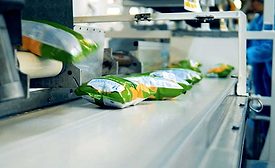Featured on Home Page
FDA's and EPA's regulation of PFAS is developing, and it is an important consideration for food producers and packagers
Read More
Quality, SQF, and the Importance of Changing Food Safety Behaviors
Even though the rules seem to state that food safety is all about documentation, in principle, all of the regulations and guidelines point to a requirement for behavior change
February 13, 2025
Building a Skilled and Capable Workforce in the Food Industry
To break the cycle of superficial compliance and truly protect consumers, the food industry must undergo a shift in mindset
February 12, 2025
Upcoming EPA Deadline to Disclose PFAS Use Means Likely Surge in Litigation for Food Industry
Reports to EPA by PFAS manufacturers and importers are likely to lead to a major increase in new consumer claims
February 12, 2025
Widening Recalls and Class Action Lawsuits: Alarming Recall Trends in 2024
The world of recall exposure and management is changing, making it more important than ever that you are fully protecting your company and brand
February 11, 2025
Proactive Allergen Prevention in the Foodservice Industry
The primary controls to prevent undeclared allergens must start in the supply chain and continue in the foodservice establishment, using multiple elements to prevent the hazard
February 11, 2025
Recall Forensics: Uncovering the Hidden Triggers Behind the Surge in Food and Beverage Recalls—Part 2
Building resilience through attention to detail is an invaluable strategy for closing critical food safety gaps and preventing costly recalls
February 11, 2025
Cannabis Innovation From a Regulator's Perspective
Each novel cannabis product that hits the marketplace introduces a new series of questions regarding product safety and efficacy
February 10, 2025
Never miss the latest news and trends driving the food safety industry
eNewsletter | Website | eMagazine
JOIN TODAY!Copyright ©2025. All Rights Reserved BNP Media.
Design, CMS, Hosting & Web Development :: ePublishing














